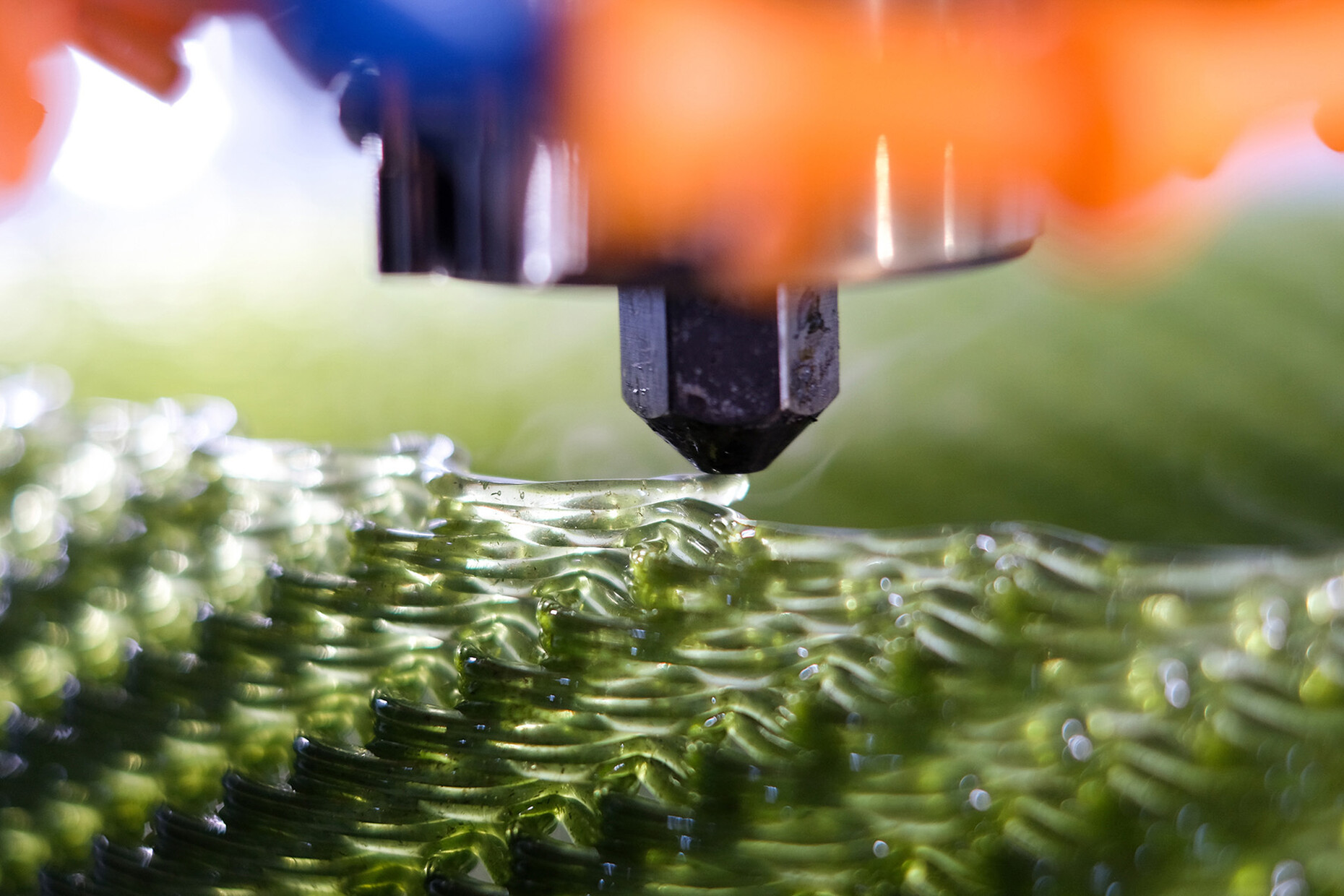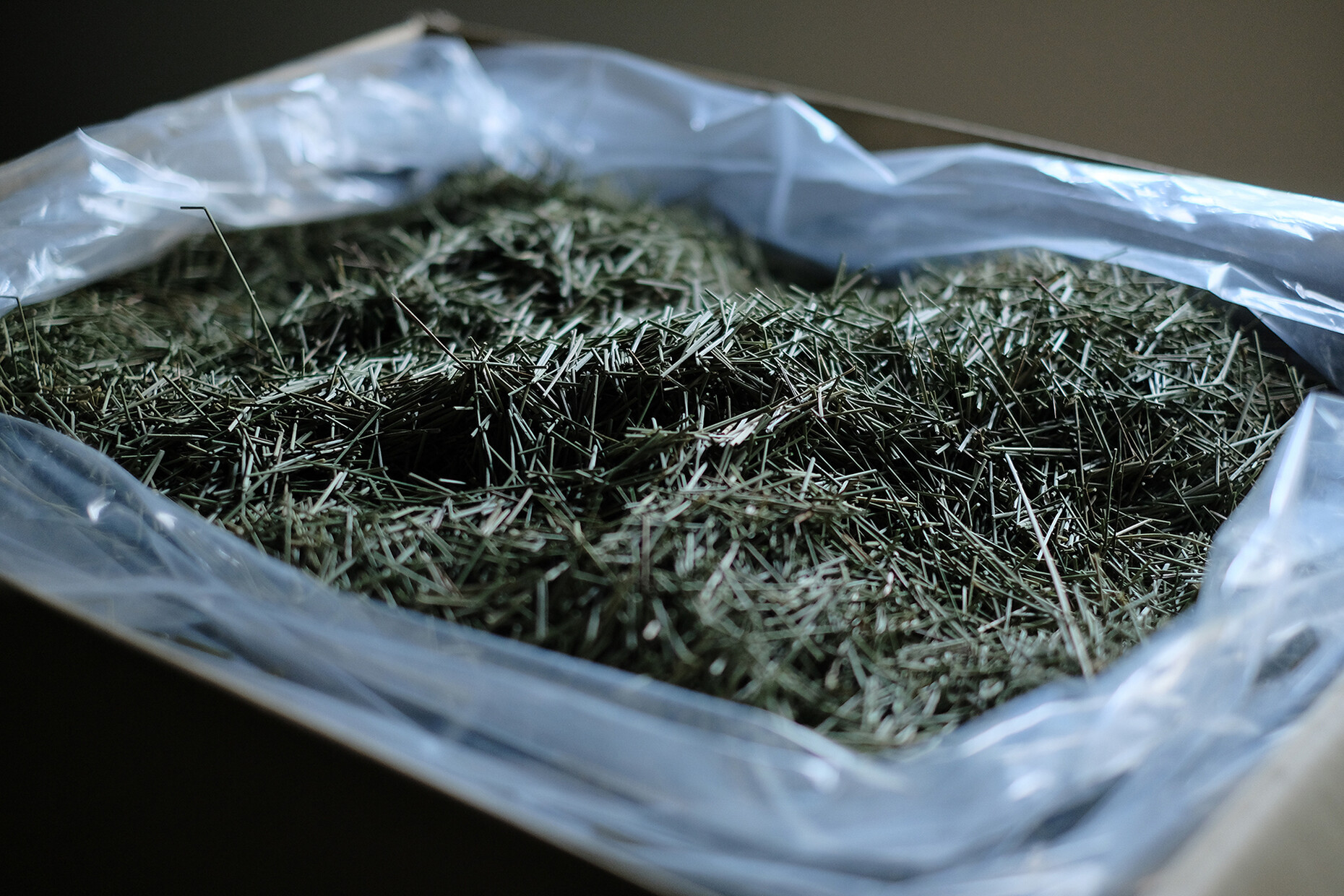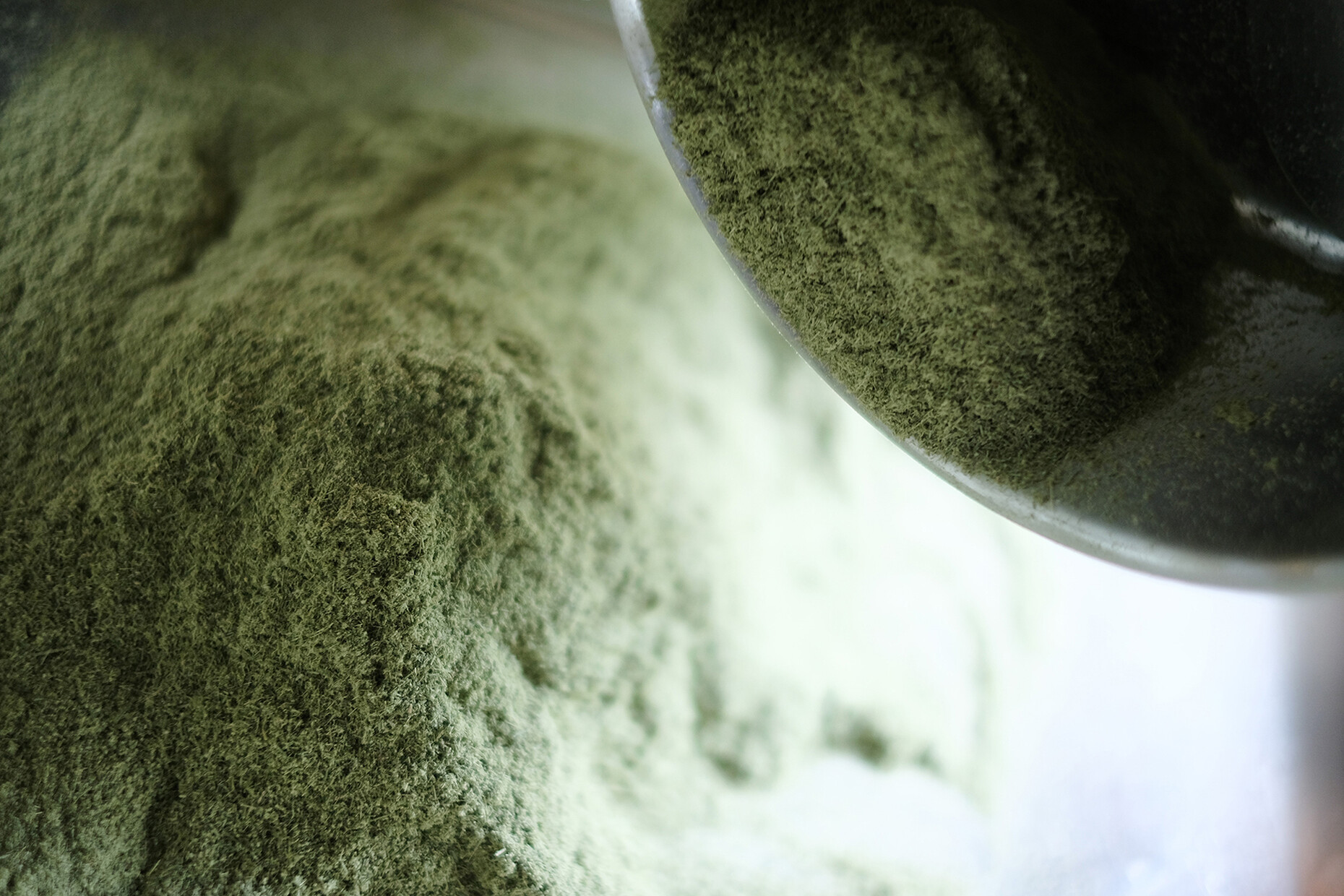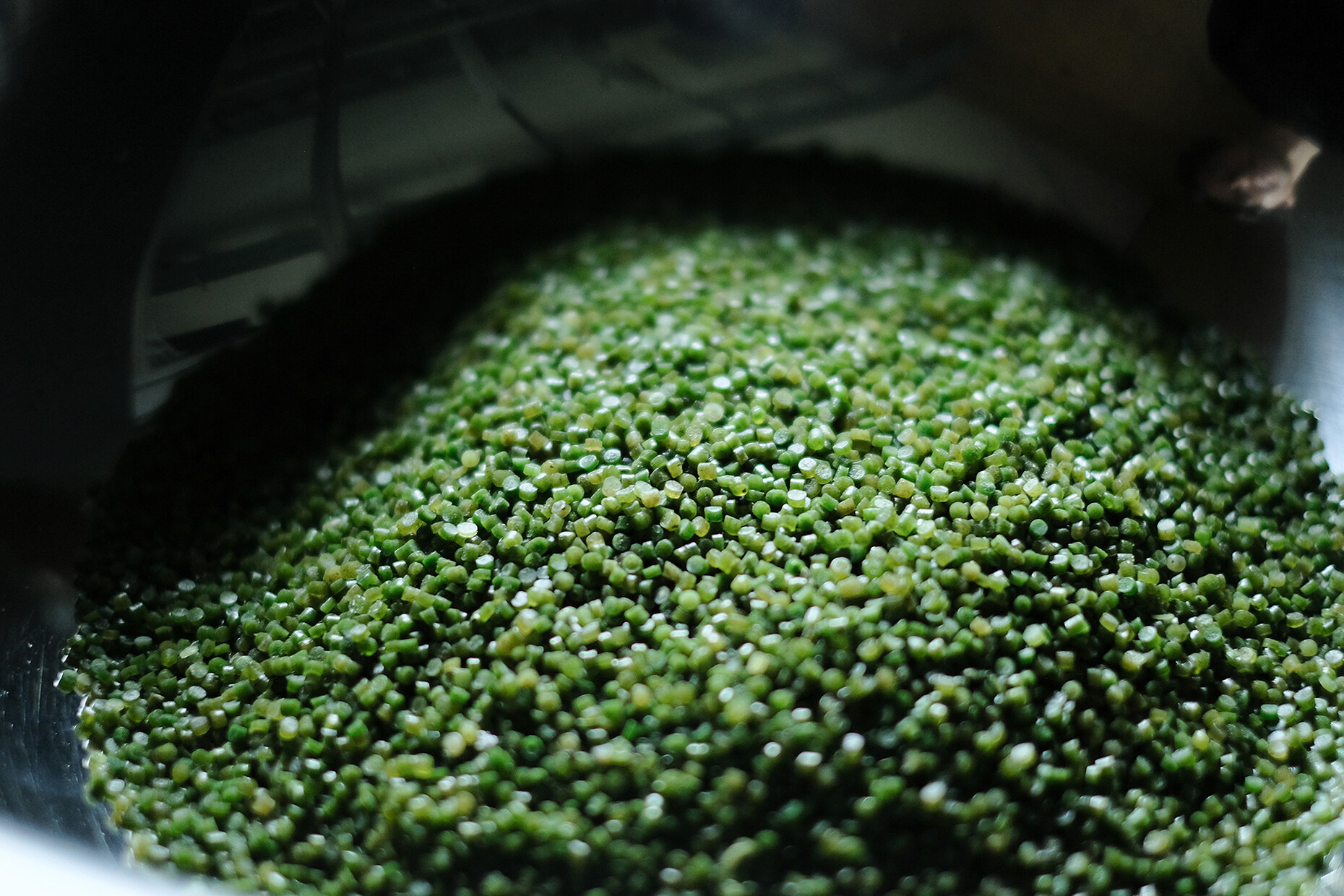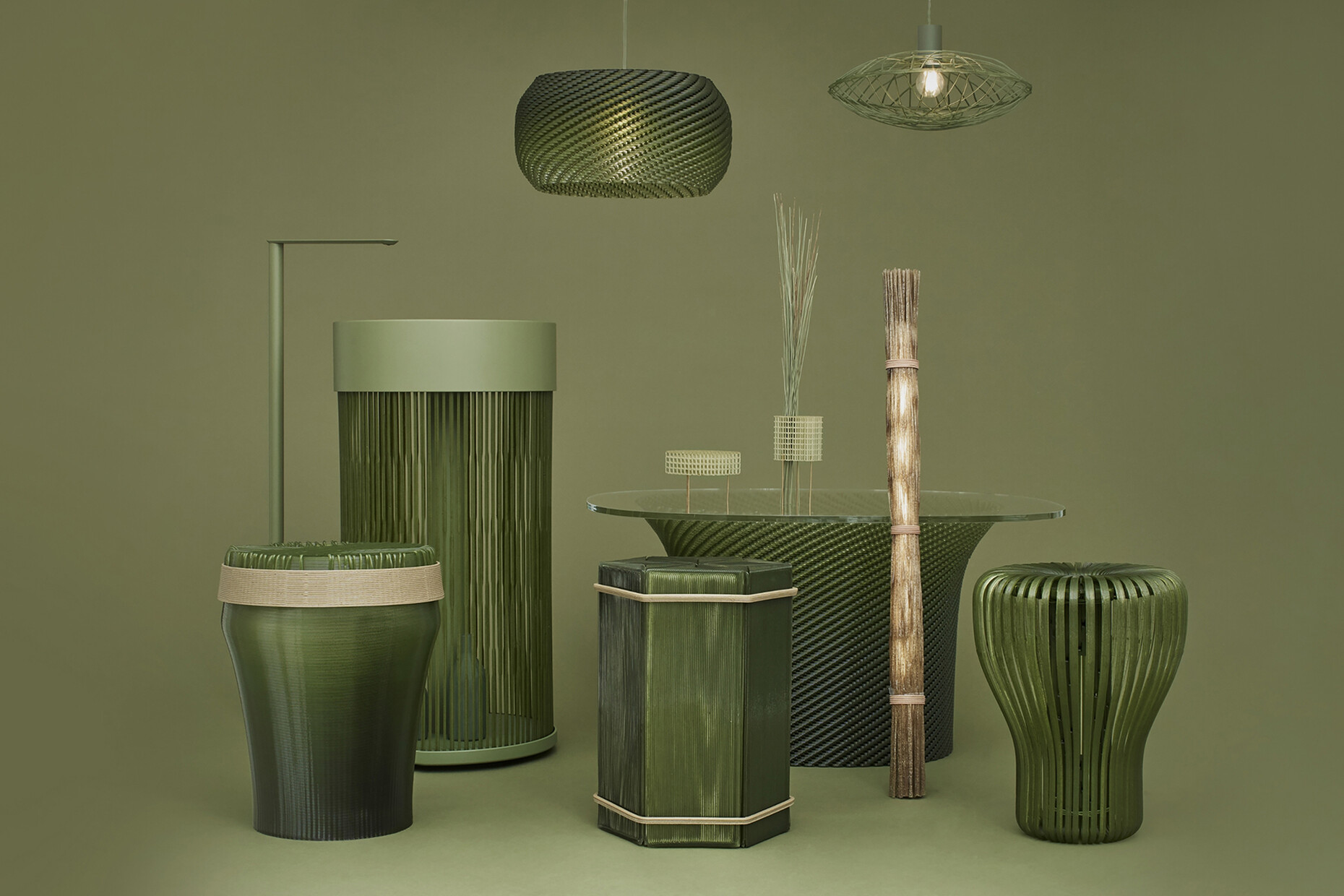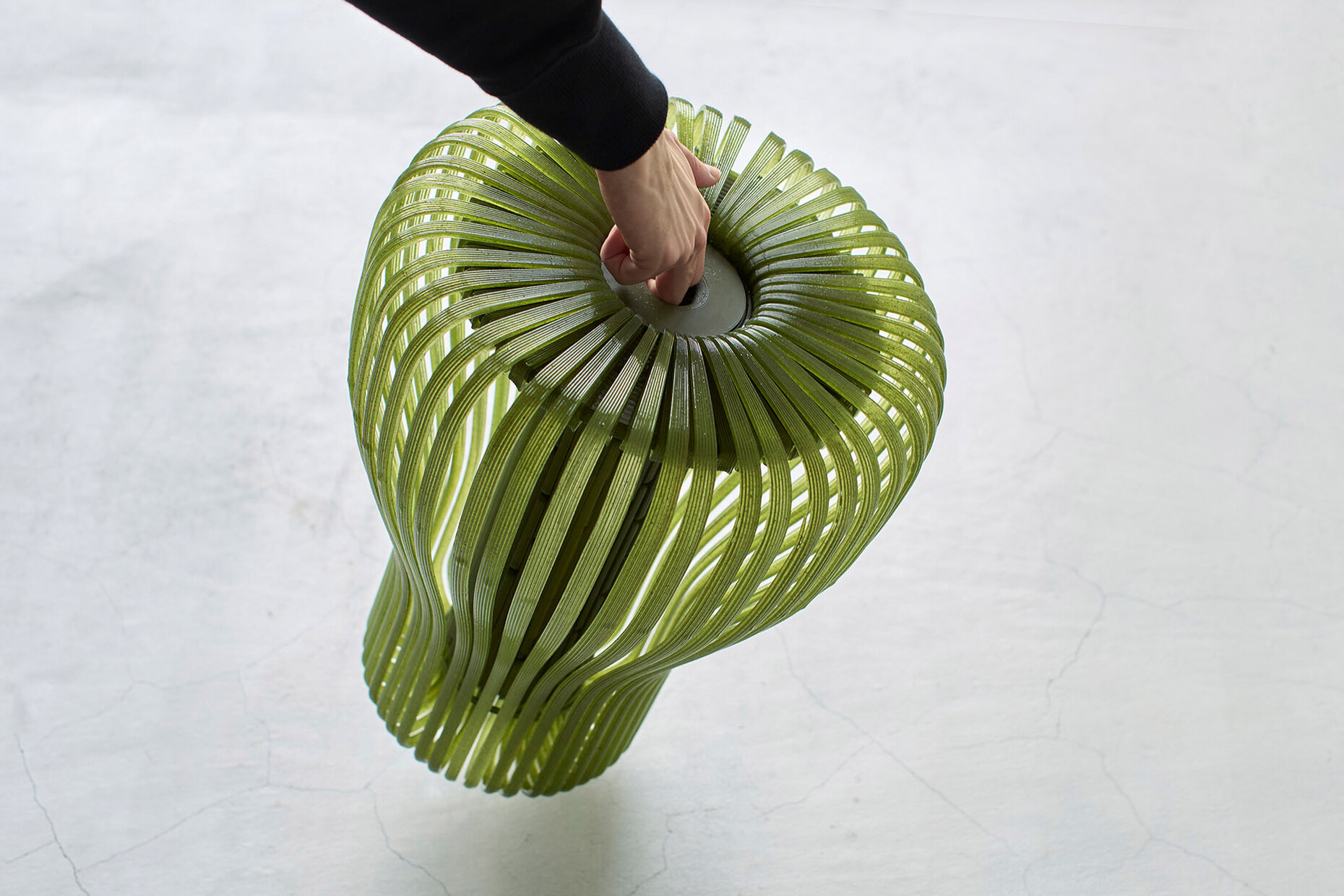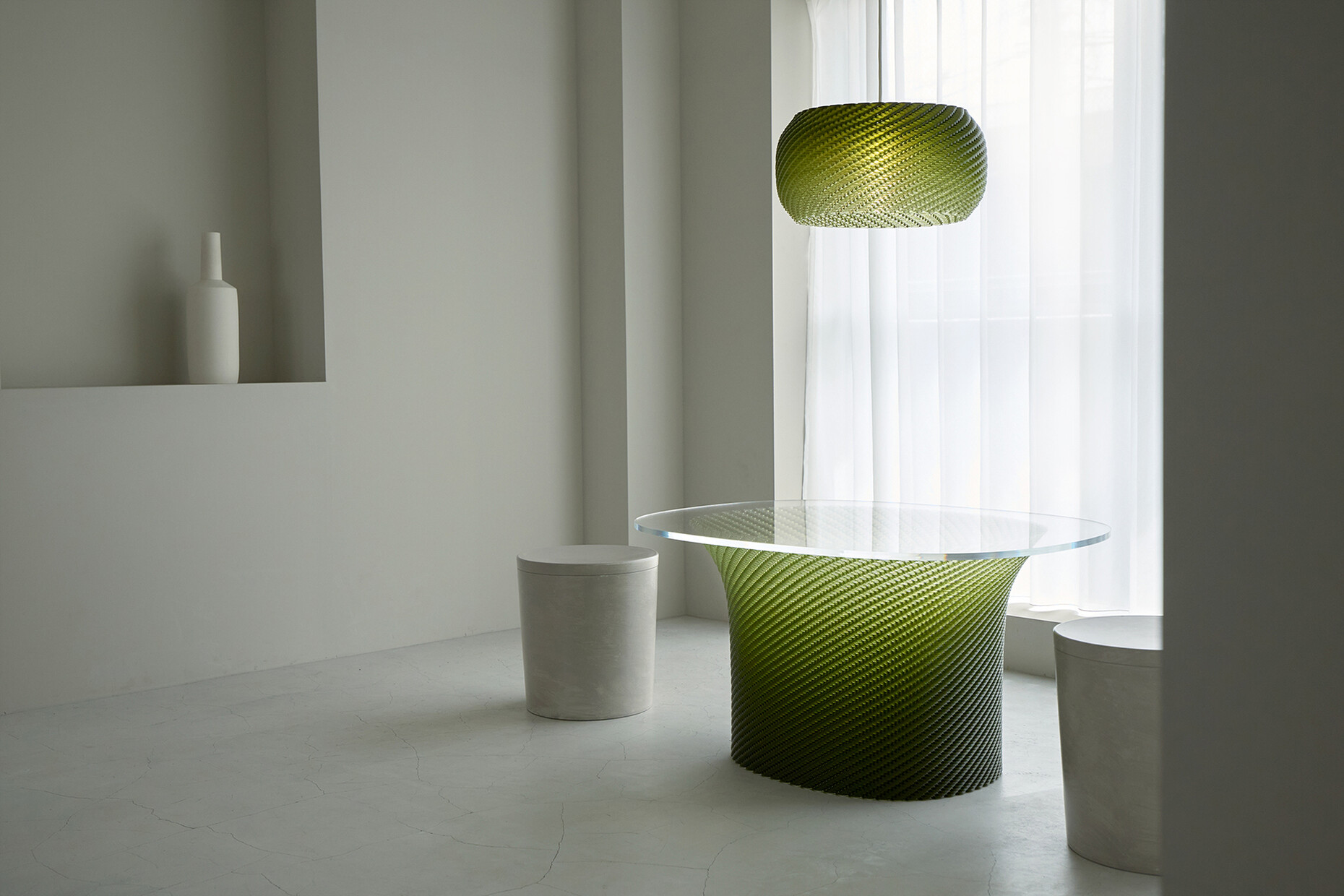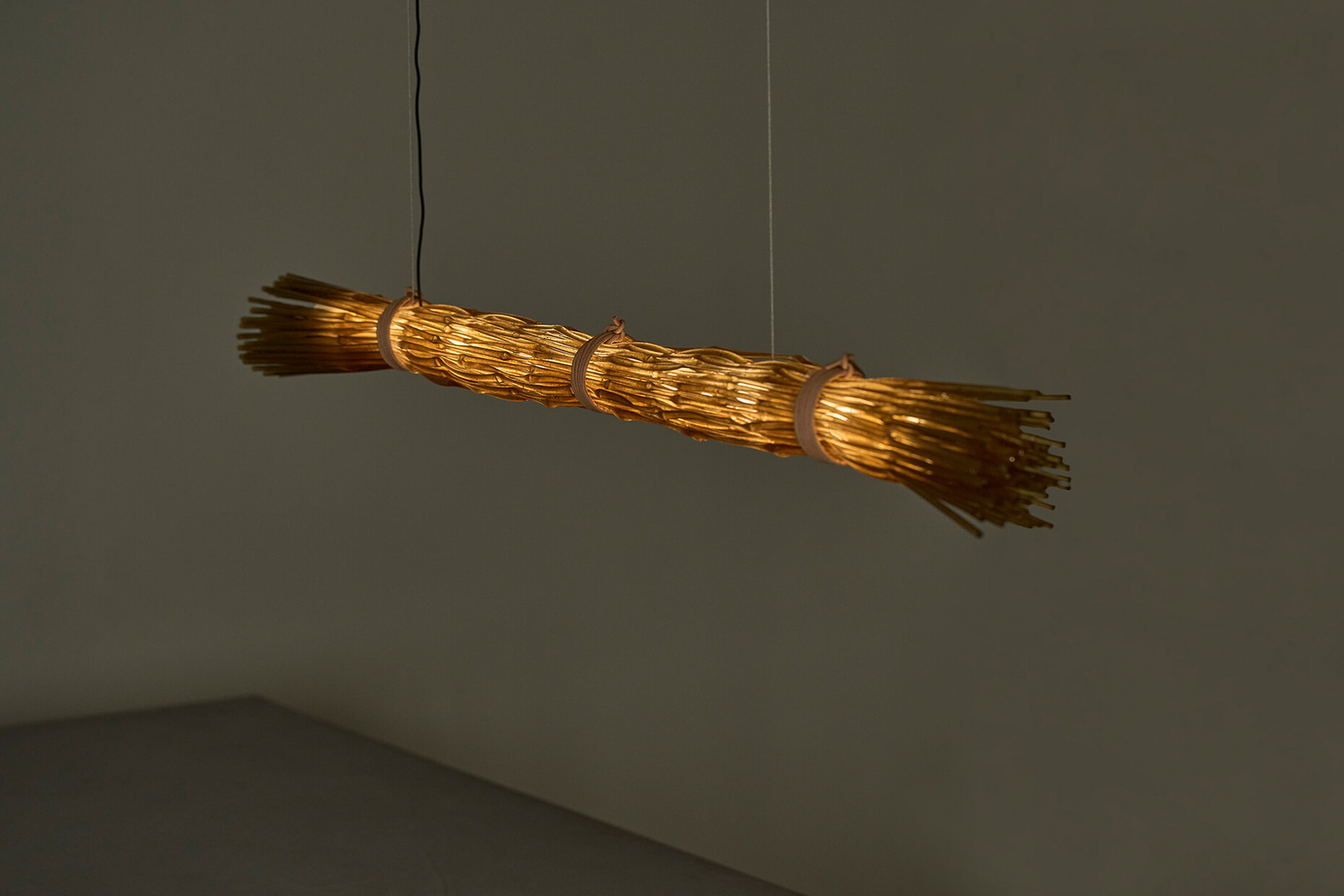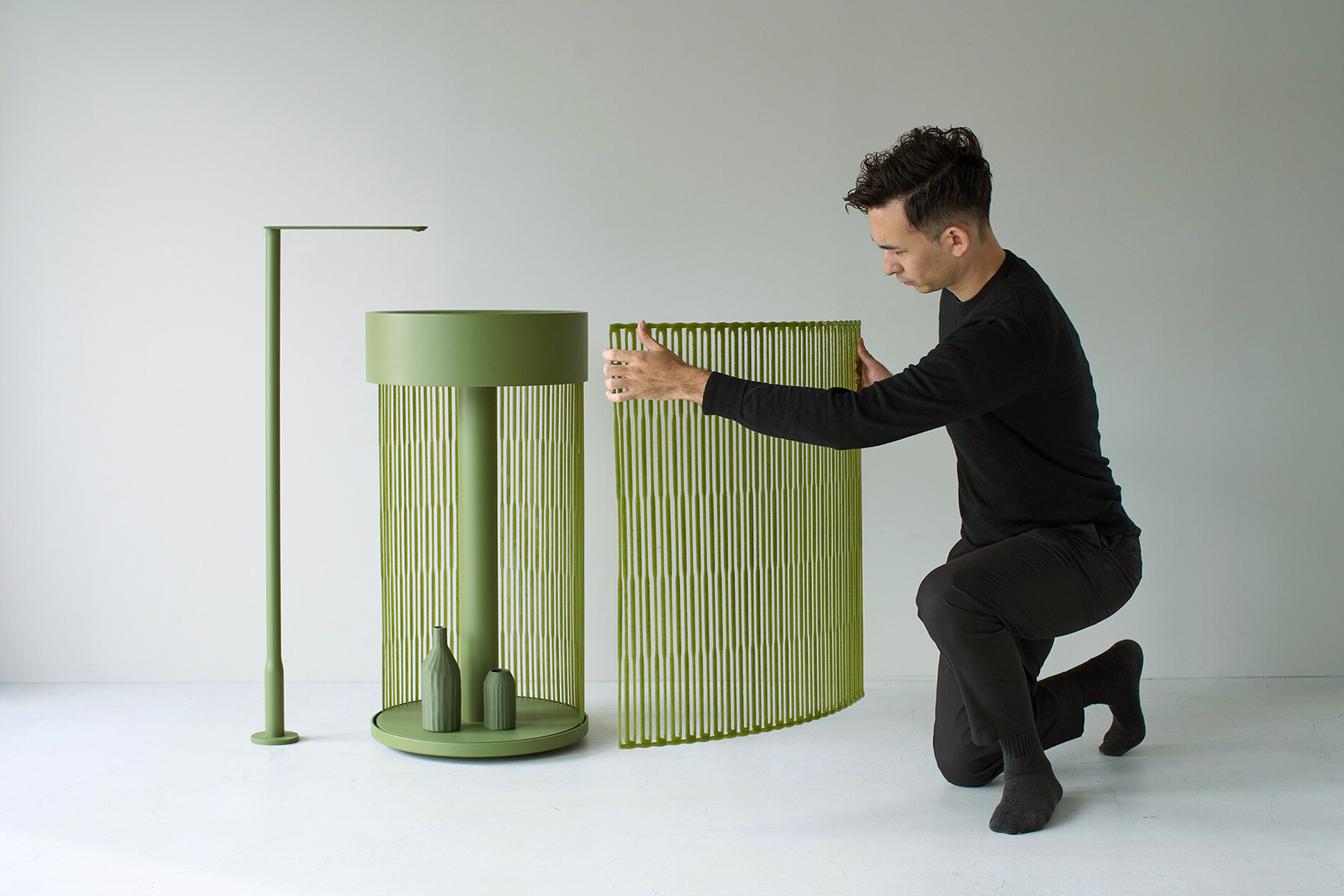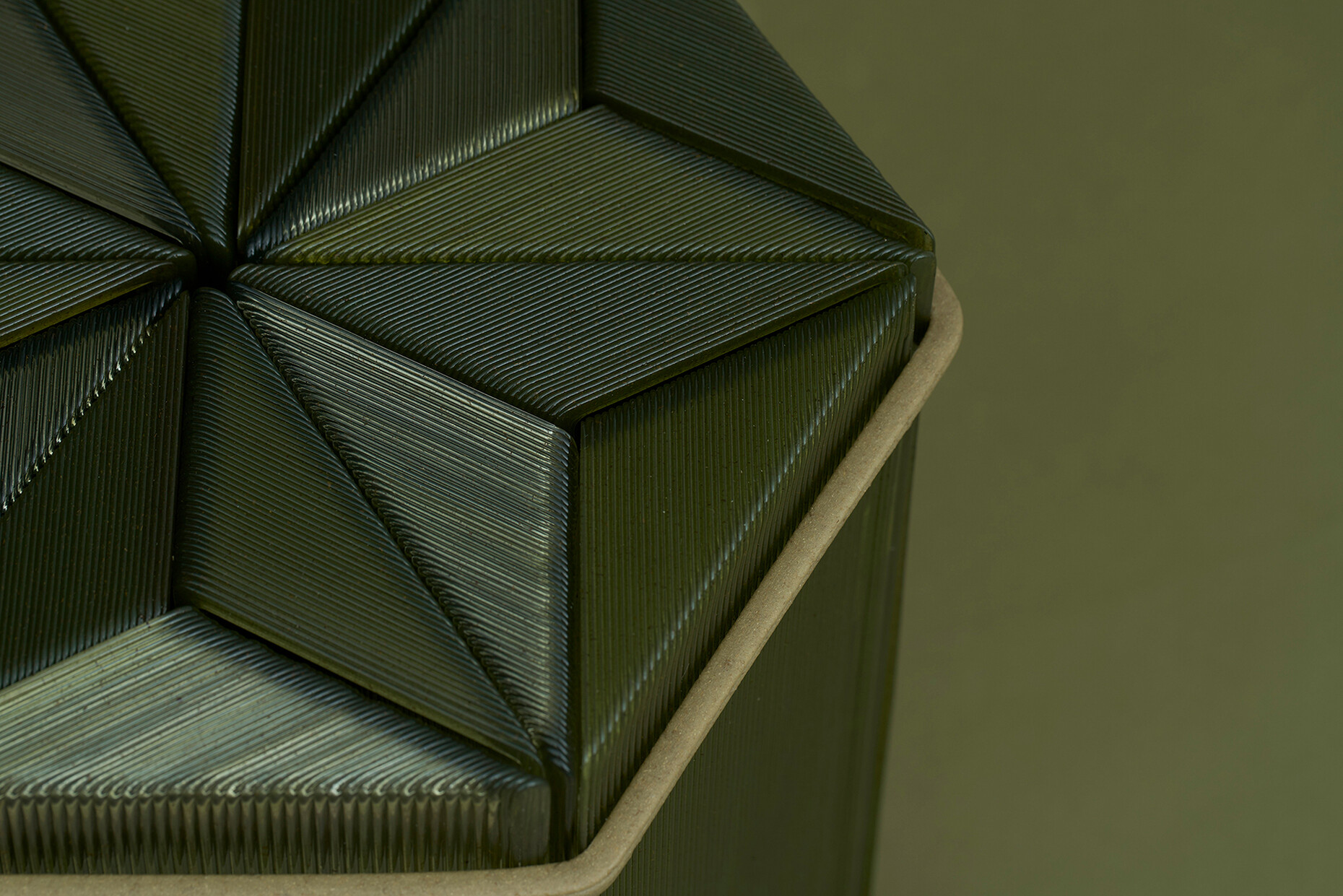YOUNG TALENTS
Tradition from the 3D printer
The traditional tatami floor mats have been an integral part of Japanese living and living spaces for centuries. Made of Igusa grass sewn together, they exhibit sound and heat insulating properties, smell pleasantly and filter the air in the room. Despite their numerous advantages, they are still rarely integrated into modern room concepts. The Tatami ReFAB Project initiated by Honoka Lab aims to preserve the cultural significance of tatami and bring it back into everyday use. For the project, they developed a new material mixed from powdered Igusa grass derived from old tatami mats as well as biodegradable resin. For the production, the team used a special 3D printer. "With the Tatami ReFAB Project, we can show the beauty of tatami and pass on its culture to the next generation," explain the six members of Honoka Lab, who each designed their own pieces of furniture. The stunning collection combines traditional Japanese aesthetics with cutting-edge technology while contributing to sustainability.
Interview with Honoka Lab
Anika Paulus: Honoka is a design lab for freelance product designers. Do you also work together on other projects?
Honoka Lab: No, everyone is doing their own work outside of this project. The Tatami ReFAB Project is the first project we have worked on together. For the further development of Igusa material research and the development of the composite fabric, we pooled our skills and established a connection with a local tatami manufacturer called Ikehiko Corporation, who agreed to provide us with discarded Igusa materials. Thanks to the cooperation with ExtraBold Inc, a company that specialises in the development of large-scale 3D printers, we were able to use a large 3D printer that is not normally accessible. This led us to choose the theme "Igusa x 3D printing" for our creations. We then started developing the materials and within four months we completed the final designs. Thanks to the networks of our team members, everything fell into place and made the exhibition at SaloneSatellite possible.
Can you describe to our European readers what tatami means to you and to Japanese culture?
Honoka Lab: Tatami mats, which have been used in Japanese living environments for centuries, are made of aromatic plants that are able to regulate moisture and reduce odours. However, due to changing lifestyles, there are fewer and fewer opportunities to experience tatami in recent years. With this project, we want to convey the appeal of tatami to the next generation. We were born and raised in rooms with tatami floors, and are very familiar with the tactile feel, scent and beauty of tatami. However, nowadays when you enter a new house in Japan, it is rare to find interiors with tatami floors, the western style of furnishing has prevailed. We want to pass on the beauty of tatami to future generations.
Tatami mats and the Isuga grass as a material have excellent thermal insulation and moisture regulation. Did the material properties have an influence on the designs of the ReFAB project? And what characteristics - colour, smell, properties - of the grass are still present in the new material?
Honoka Lab: We have focused on developing a material that utilises the unique aroma, good texture, moisture regulation and deodorising properties of tatami. In the next step, we want to make the functionality of our material as similar as possible to natural tatami.
Did you start creating with tatami mats and Igusa grass, or rather with the newly developed material?
Honoka Lab: We initially focused on tatami mats and Igusa, and a 3D printer was the means to realise what we wanted to do. Igusa cannot be made 100 per cent with a 3D printer, so a binder is inevitably required. We were very picky about the binder and wanted to use a plant-based material, so we chose cellulose acetate.
The yarns created with the 3D printer seem to be a modern translation of those made from Igusa grass, which are used to make tatami mats. To what extent has the traditional way they are woven influenced the designs?
Honoka Lab: The texture of tatami is created by weaving linear igusa, resulting in a beautiful three-dimensional surface. The concept of "reweaving a single line" is a key concept in creating such a line and the three-dimensional texture. Our aim is not to resemble tatami in our specific designs, but to create new designs derived from tatami.
Did each of you decide together in advance which objects / designs you wanted to compile into a broad, versatile collection, or was that an individual process?
Honoka Lab: In order to establish ourselves as a furniture brand, we determined the design through preliminary discussions about the design language.
The overall aim of the ReFAB Project is to pass on tatami culture to the next generation, but in a new, modern way. It is a very different, almost opposite approach, to preserve old traditions as they are and try to keep them interesting and relevant for the next generations. Do you think that both approaches are necessary to keep traditions like tatami alive - the very traditional way and the new approach?
Honoka Lab: We believe that this is necessary. Tatami in its traditional form is in decline. To prevent this, we have mixed powdered Igusa with resin to improve its malleability and transform it into products that fit the modern and future lifestyle.
Will the ReFAB Project collection be brought to market? Or is it rather meant to communicate the topic and create awareness for it?
Honoka Lab: We intend to continue working on projects with Igusa. It is difficult for us to build a mass production system on our own, and we look forward to meeting partners who will work with us. We will continue to research and use next-generation manufacturing methods, which is in line with Honoka's philosophy to create products with the subtle charm of natural materials in terms of texture, fragrance and colour.
